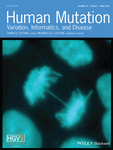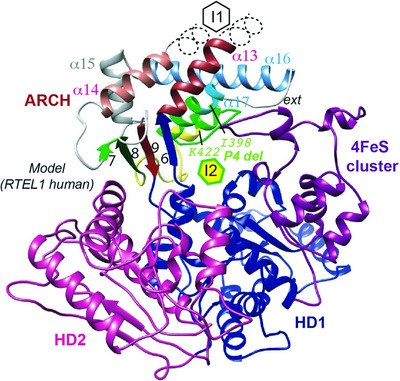Journal list menu
Export Citations
Download PDFs
Cover Image, Volume 37, Issue 5
- First Published: 15 April 2016
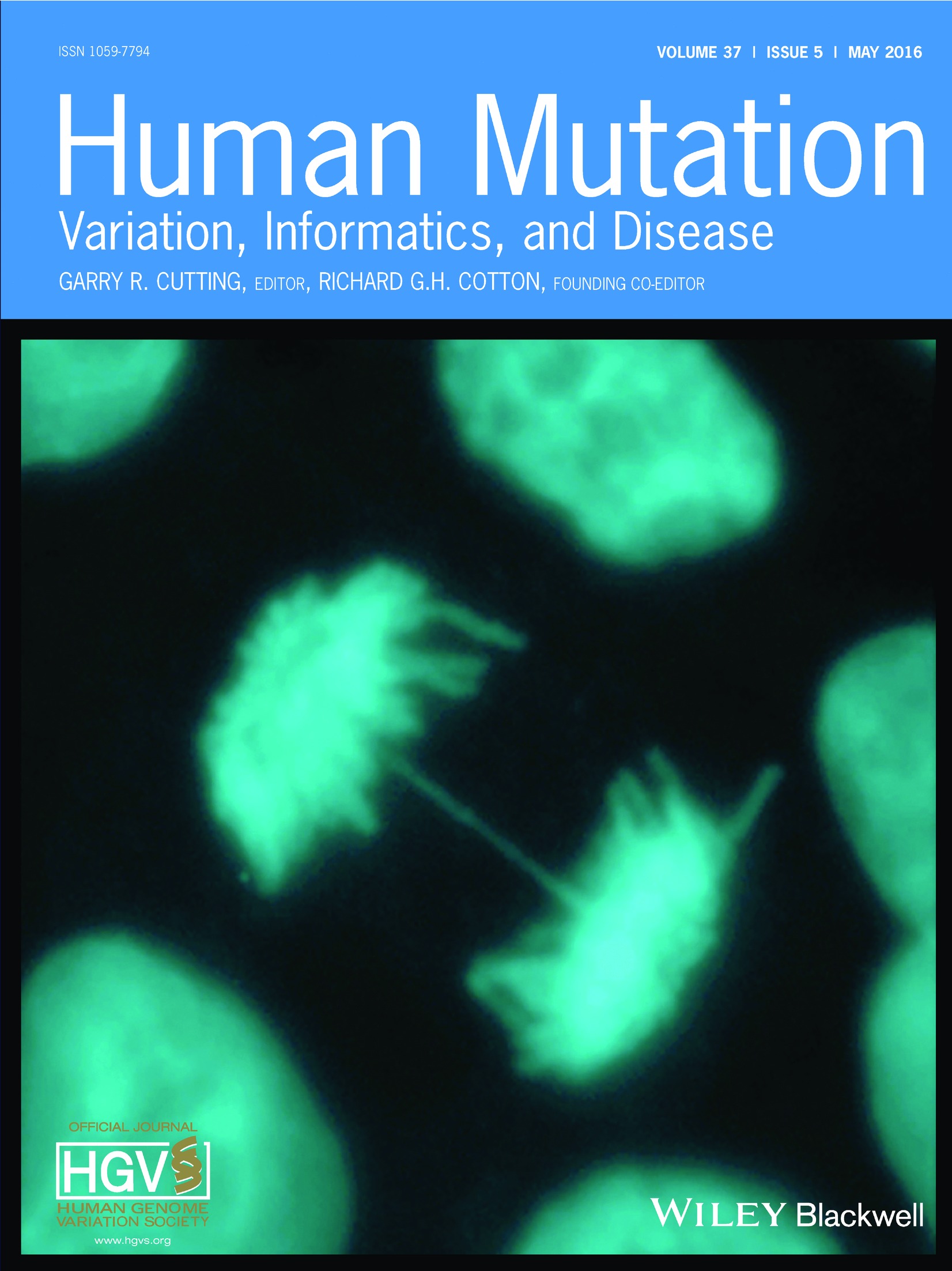
On the cover: The cover image, by Patrick Revy et al., represents an anaphase bridge, which is a hallmark of the genomic instability that occurs in RTEL1-deficient cells. It is based on the Brief Report Mutations of the RTEL1 Helicase in a Hoyeraal-Hreidarsson Syndrome Patient Highlight the Importance of the ARCH Domain, Pages 469–472, DOI: 10.1002/humu.22966.
Understanding the Pathogenicity of Noncoding Mismatch Repair Gene Promoter Variants in Lynch Syndrome
- Pages: 417-426
- First Published: 17 February 2016
Mutation Update and Review of Severe Methylenetetrahydrofolate Reductase Deficiency
- Pages: 427-438
- First Published: 13 February 2016
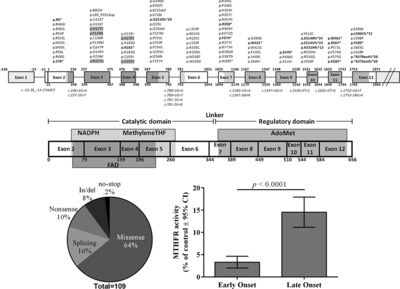
This mutation update collates all known patients (192, in 171 families) and mutations (109) associated with severe MTHFR deficiency. The majority of mutations are of the missense type, predominantly found in the N-terminal catalytic domain. In severe MTHFR deficiency, lower enzymatic activity correlates with early onset (<1 year) disease, suggesting residual enzymatic function is an important determinant of disease.
UMD-Predictor: A High-Throughput Sequencing Compliant System for Pathogenicity Prediction of any Human cDNA Substitution
- Pages: 439-446
- First Published: 04 February 2016
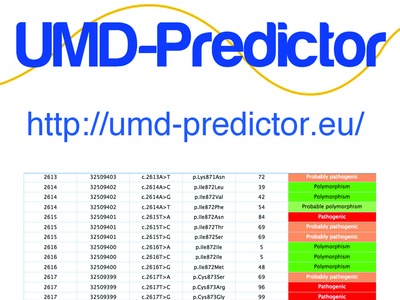
UMD-Predictor is a new bionformatics system to predict the pathogenicity of human genes mutations. It is today the most efficient system and it can be integrated in any NGS analysis pipeline. It will benefit to a wide range of users and applications varying from gene discovery to clinical diagnosis.
mutation3D: Cancer Gene Prediction Through Atomic Clustering of Coding Variants in the Structural Proteome
- Pages: 447-456
- First Published: 03 February 2016
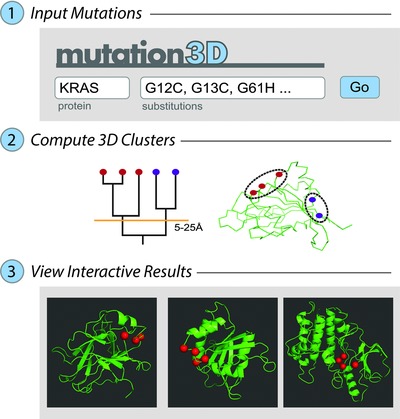
mutation3D is a new algorithm and Web server designed to find clusters of somatic cancer mutations in three-dimensional protein structures. Users may input their mutation data in a variety of popular formats for small or large-scale discovery of mutation hotspots across the structural proteome. Further, we demonstrate the ability of mutation3D to indicate many well-validated driver genes as well as several new and underexplored target candidates.
CoNVaDING: Single Exon Variation Detection in Targeted NGS Data
- Pages: 457-464
- First Published: 10 February 2016
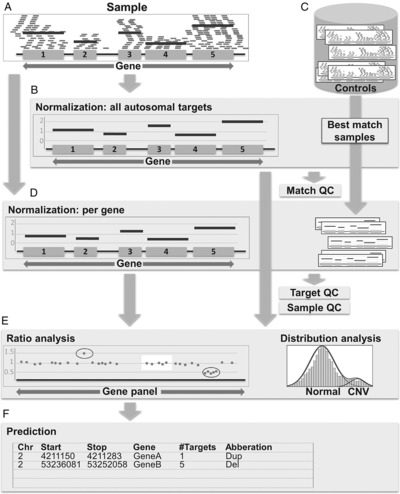
We have developed a tool for detecting single exon copy number variations (CNVs) in targeted next-generation sequencing data: CoNVaDING (Copy Number Variation Detection In Next-generation sequencing Gene panels). CoNVaDING includes a stringent quality control metric, that excludes or flags low quality exons. Since this quality control shows exactly which exons can be reliably analysed and which exons are in need of an alternative analysis method, CoNVaDING is also useful for CNV detection in clinical diagnostics.
Paternal or Maternal Uniparental Disomy of Chromosome 16 Resulting in Homozygosity of a Mutant Allele Causes Fanconi Anemia
- Pages: 465-468
- First Published: 03 February 2016
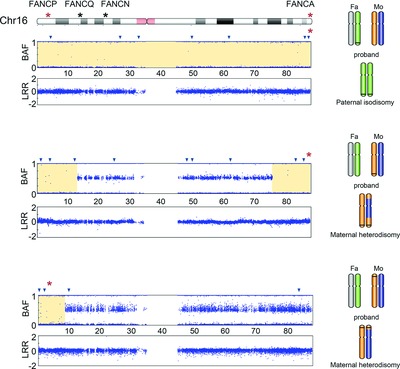
We report evidence for UPD as a cause of Fanconi anemia(FA), a rare, mostly recessive disorder. We discovered patients with homozygous pathogenic variants in FANCA and FANCP/SLX4, where only one of their parents was a carrier. Using high density SNP arrays, and short tandem repeat markers (inverted triangles), we identified these patients lack a contribution of the entire chromosome 16 from one of their parents, and present homozygosity of the inherited mutant region from the other parent.
Mutations of the RTEL1 Helicase in a Hoyeraal-Hreidarsson Syndrome Patient Highlight the Importance of the ARCH Domain
- Pages: 469-472
- First Published: 05 February 2016
DGAT2 Mutation in a Family with Autosomal-Dominant Early-Onset Axonal Charcot-Marie-Tooth Disease
- Pages: 473-480
- First Published: 20 January 2016
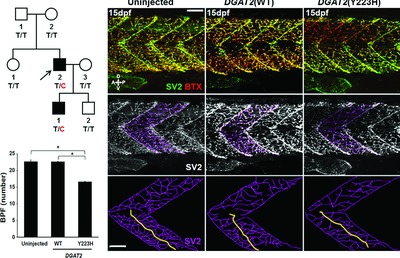
A DGAT2 mutation (p.Y223H) was found in an autosomal dominant axonal CMT family. In the zebrafish larvae, the over-expressed mutant DGAT2 showed an abrogated formation of the bundle of neuronal axons (fascicles) in the trunk at 3 dpf and significantly decreased number of branched axons per fascicle (BPF) in the peripheral nervous system at 15 dpf.
MYO3A Causes Human Dominant Deafness and Interacts with Protocadherin 15-CD2 Isoform
- Pages: 481-487
- First Published: 03 February 2016

We identified a novel mutation in the motor-head of MYO3A causing dominant non-syndromic deafness. The mutation severely alters the ATPase activity and motility of the protein. The mutant protein fails to accumulate in filopodia tips in COS7 cells, but was able to reach explant hair cell stereocilia tips. We also found that MYO3A interacts with integral tip-link protein protocadherin 15 (PCDH15), which led us to speculate about a local dominant effect of mutant MYO3A on MET complex positioning.
Extensive Variation in the Mutation Rate Between and Within Human Genes Associated with Mendelian Disease
- Pages: 488-494
- First Published: 09 February 2016
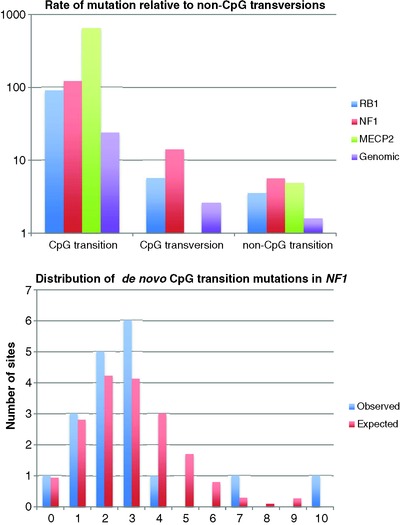
We show that the rate of mutation varies substantially both with and between three genes associated with Mendelian disease: RB1, NF1 and MECP2. We find that the rate of CpG transition can be several hundred-fold higher than the rate of non-CpGtransversion mutation, much higher than the genomic average. We also find that the rate of all mutations, except CpG transitions, varies by at least 30-fold within our three genes genes.
ESHG Plenary Debate 2015: Should Clinical Geneticists have their Genome Sequenced?
- Pages: 495-497
- First Published: 04 February 2016




